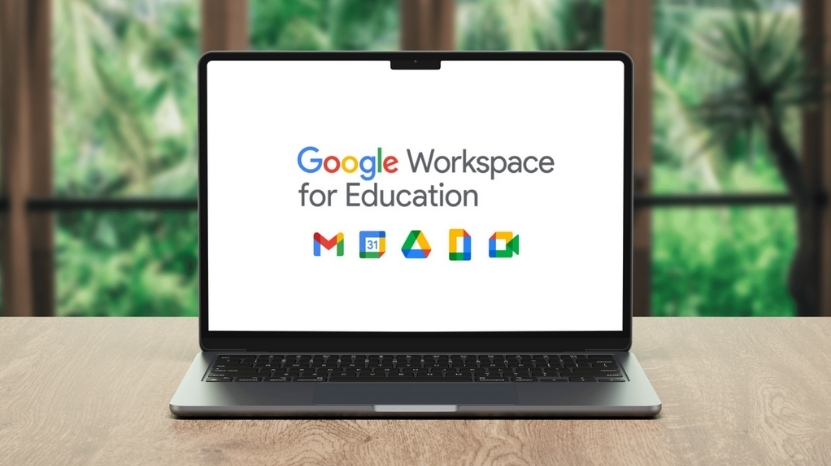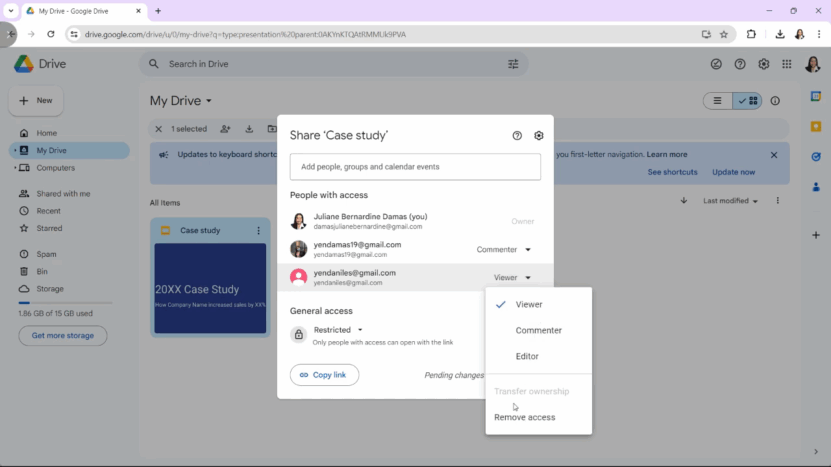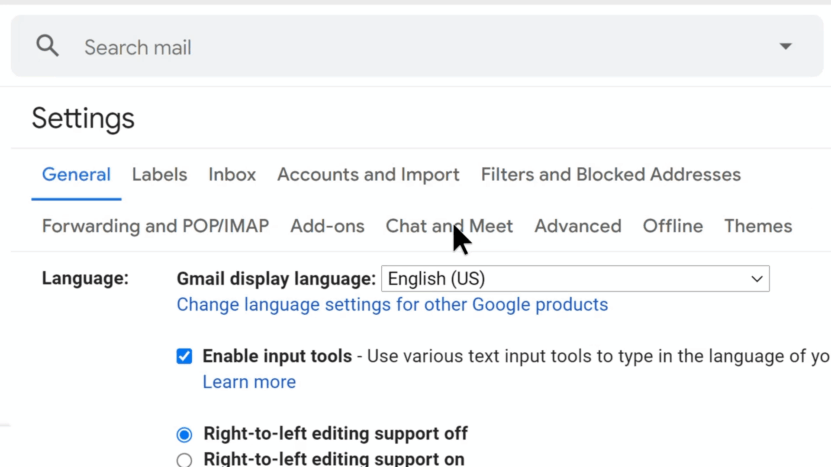
Share Post:
A recent study published by the National Center for Biotechnology Information (NCBI) found that tools within Google Workspace — including Docs, Meet, and Classroom — are widely adopted in higher education, playing a central role in improving instruction, collaboration, and communication across institutions.
With flexible delivery models becoming the norm, universities are increasingly leveraging Google Workspace to streamline course management and enhance digital engagement.
This article breaks down 11 targeted, evidence-informed strategies for using Google Workspace to boost instructional efficiency and simplify day-to-day academic operations in colleges and universities.
Table of Contents
ToggleStreamline Assignments with Google Classroom
Google Classroom simplifies the full cycle of assignment management: distribution, tracking, grading, and feedback — all within a single platform.
According to Google’s official documentation and usage guides, educators can assign work, reuse posts, attach files from Drive, set deadlines, and monitor progress in real time.
Key Functionalities
Feature
Description
Assignment Scheduling
Instructors can schedule release dates and due dates for assignments, allowing for an automated workflow.
Rubric Integration
Teachers can attach rubrics directly to assignments to clarify expectations and enable standardized grading.
Individualized Tasks
Assignments can be sent to individual students or groups, supporting differentiated instruction.
Submission Dashboard
Teachers get a real-time view of who has turned in assignments and who is late.
Integration with Google Drive
All submitted work is automatically stored and organized in Google Drive.
Efficiency Impact Snapshot
Metric
Benefit
Time saved on assignment distribution
~30–40% less time vs. email/manual methods
Late submission tracking
Real-time alerts; no need for manual logs
Grading consistency
Rubrics enforce uniform grading criteria
Student engagement
Increased with real-time feedback and structured workflows
Collaborate in Real-Time with Google Docs & Slides

Google Docs and Slides enable live, multi-user collaboration, making them essential for group assignments, peer feedback, and co-teaching. All edits are saved automatically and tracked by the user, enhancing both accountability and transparency.
According to Google Workspace for Education documentation, Docs and Slides allow up to 100 collaborators simultaneously on a single file. Revision history is stored indefinitely, allowing rollbacks to any previous version.
Core Collaborative Features
Feature
Function
Live Editing
Multiple users can type, format, and annotate a document or slide deck in real-time.
Commenting & Suggestions
Users can leave targeted comments or suggest edits without altering the original content.
Version History
Every change is logged; educators can restore prior versions at any time.
Tagging & Notifications
Use @mentions to tag collaborators, triggering email notifications.
Voice Typing & Accessibility
Voice input and screen reader compatibility aid inclusivity.
Collaboration Use Cases in Higher Ed
Use Case
Application
Group projects
Multiple students co-authoring reports or presentations with live peer review.
Peer feedback
Structured critique using comment threads and suggestion mode.
Faculty collaboration
Co-developing syllabi, research proposals, or departmental docs.
Guest lectures
Outside experts can edit or comment on student work without email setup.
Make Learning Interactive with Google Forms & Quizzes
Google Forms transforms static assessments into interactive, auto-graded activities. It’s widely used in higher education for quizzes, surveys, feedback collection, and data-driven instruction.
According to Google, Forms supports multiple question types, logic branching, and automatic result aggregation in Google Sheets.
Core Features for Instruction
Feature
Description
Auto-Grading
Multiple choice and checkbox questions can be automatically graded.
Answer Feedback
Educators can add explanations or links to guide student understanding post-submission.
Branching Logic
Custom paths based on responses improve engagement and personalization.
Response Validation
Enforce correct formatting (e.g., emails, numbers) to ensure quality inputs.
Data Export
All responses can be exported to Google Sheets for real-time analysis and insights.
Use Cases in Higher Ed
Use Case
Purpose
Formative Quizzes
Frequent low-stakes checks for understanding across lectures or modules.
Course Feedback
Anonymous surveys on course design, teaching effectiveness, or content delivery.
Research Surveys
Student-created or faculty-led data collection for capstones and dissertations.
Peer Evaluation
Structured peer grading in team-based projects.
Efficiency Impact Snapshot
Metric
Benefit
Grading time per quiz
Reduced by up to 60–70% via auto-grade
Data entry workload
Eliminated due to seamless export to Sheets
Feedback delivery
Instant upon form submission
Student engagement
Increased through interactive and personalized forms
Organize Class Materials with Google Drive
@hellomrspoe organize my Google Drive with me! #googleteacher #tiktokteachers #DontQuitYourDaydream #backtoschool ♬ original sound – Maddy | Teaching + Tech Tips
Google Drive serves as the central content hub for Google Workspace, allowing educators and students to store, manage, and share documents, videos, lecture notes, and more.
With folder hierarchies, granular sharing controls, and cloud-based access, Drive significantly reduces friction in academic content distribution.
Key Organization Features
Feature
Function
Folder Structure
Create nested folders for courses, units, and assignments.
Color Coding
Assign folder colors to visually distinguish subjects or topics.
Shared Drives
Departmental or course-specific Drives for team-based access and collaboration.
Permission Controls
Share files with “view,” “comment,” or “edit” access by individual or group.
Search and Filter
Use keywords, owner, type, and modification date to instantly locate files.
Use Cases in Higher Ed
Use Case
Example
Course Material Distribution
Upload readings, rubrics, and slide decks organized by week or topic.
Research Collaboration
Share datasets and drafts with advisors and project collaborators.
Student Submission Repositories
Create folders for assignment dropboxes per course or section.
Department Resource Archives
Long-term storage for policies, templates, and training guides.
Efficiency Impact Snapshot
Metric
Benefit
Time spent managing course files
Reduced by up to 50% using shared, organized Drive folders
Email volume for file requests
Lowered significantly by providing centralized access
File recovery success
100% version tracking and recoverability through Drive’s backup system
Enhance Communication with Google Chat & Gmail

Clear, efficient communication is critical in higher education for faculty coordination, student support, and campus-wide announcements. Google Chat and Gmail are integral to Google Workspace, offering a secure, streamlined environment for both real-time messaging and formal correspondence.
Google Chat allows threaded discussions, group conversations, and file sharing, making it ideal for coordinating project-based work, facilitating quick student-teacher interactions, or managing department-level communication. Unlike consumer chat apps, it’s FERPA-compliant and natively integrated with other Workspace tools like Docs, Calendar, and Meet.
Gmail provides advanced filtering, labels, and smart replies, helping educators manage high volumes of email efficiently. With built-in confidentiality modes and phishing protection, Gmail supports both administrative and academic communication needs securely.
In institutions with international programs, multilingual students, or global faculty, effective communication often requires more than just speed — it demands clarity and localization.
Whether it’s translating admissions content, interpreting during live online classes, or localizing syllabi for international learners, integrating a service like Elmura Linguistics alongside Google Workspace tools creates a more inclusive and globally connected educational experience.
Track Progress with Google Sheets & Analytics
Google Sheets is more than a spreadsheet tool—it’s a real-time, collaborative platform that enables educators to track student performance, analyze learning trends, and make data-informed decisions without needing specialized software.
Faculty can build custom gradebooks, attendance logs, or participation trackers using formulas and conditional formatting. Google Sheets integrates seamlessly with Forms (for auto-populating quiz results) and Classroom (for exporting grades), making it a central tool for academic progress monitoring.
Educators using Google Workspace for Education Plus also gain access to Classroom Analytics, which displays assignment completion rates, student engagement levels, and overall class trends at a glance. These analytics help instructors identify at-risk students early and adjust instruction accordingly.
Sheets also supports pivot tables, charts, and data validation, making it ideal for both educators and researchers who want to visualize performance data over time.
Common higher education use cases include:
- Monitoring lab attendance and assignment completion
- Tracking outcomes across different course sections
- Analyzing student survey data for instructional design
- Comparing cohort performance by semester or demographic
Because Sheets is cloud-based, instructors can share live dashboards with department heads, advisors, or co-teachers in real time—ensuring transparency and collective intervention when needed.
Create Flexible Learning with Google Meet & Screencast
Need some help getting started with Google Meet?
How to use Google Meet
💻Interactive infographic with tutorials
🏫Using Meet in Google Classroom
📹Tips for successful video calls
❗️ How to host a Kahoot with Google Meet
& MOREhttps://t.co/rU3WG5biSo pic.twitter.com/X5l0Z1NJZM— Matt Miller 🗑️ (@jmattmiller) October 30, 2023
Flexibility in content delivery is no longer optional — especially in hybrid, asynchronous, or international education settings. Google Meet and the Screencast app on Chromebooks enable instructors to deliver high-quality, accessible learning experiences without reliance on third-party tools.
Google Meet supports real-time classes with up to 250 participants (or 500 with Education Plus), breakout rooms, polls, live captions, and Q&A — all integrated into Google Calendar and Classroom. Instructors can also live stream to up to 10,000 domain viewers for campus-wide events, guest lectures, or recorded workshops.
Screencast, built into Chromebooks, lets educators record their screens with voice and video overlays. These recordings are automatically transcribed and saved to Google Drive — ideal for flipping classrooms or offering lecture replays.
Together, Meet and Screencast:
- Support live + asynchronous models
- Provide accessibility via live captions and transcripts
- Reduce redundant teaching effort by enabling replayable instruction
- Allow remote participation in office hours, seminars, and group work
These tools are especially valuable for:
- Students in different time zones
- Faculty running blended or flipped courses
- Departments recording onboarding, safety, or policy briefings
Save Time with Templates & Add-Ons

One of the most underutilized time-saving features in Google Workspace is the use of templates and add-ons.
These tools allow educators to automate repetitive tasks, standardize formatting, and enhance content delivery without reinventing the wheel each time.
Templates
Google Docs, Slides, Sheets, and Forms all support template galleries, which include ready-made structures for lesson plans, rubrics, calendars, quizzes, and meeting agendas.
Educators can also create and distribute custom templates within their domain.
Key advantages:
- Maintain consistency across sections or departments
- Minimize setup time for recurring tasks
- Allow students to start with structured formats (e.g., lab reports or essay outlines)
Add-ons
Add-ons are third-party tools integrated directly into Workspace apps. Popular add-ons for educators include:
- Autocrat (Docs/Sheets): Automates the creation of personalized documents and certificates from spreadsheet data
- FormLimiter (Forms): Automatically closes a form at a certain time or after a response limit
- Pear Deck / Edpuzzle (Slides): Adds interactive questions and video prompts to lecture slides
These extensions allow instructors to streamline grading, content creation, and student engagement with minimal technical setup.
By investing a few minutes in setup, faculty can save hours across the semester while maintaining higher consistency and interactivity in course delivery.
Provide Inclusive Access with Accessibility Features

Accessibility is not optional in higher education — it’s a legal requirement and a core component of equitable learning. Google Workspace includes a range of built-in accessibility tools that support diverse learning needs, including those with visual, auditory, cognitive, or motor impairments.
Key Accessibility Features
- Voice Typing (Docs): Allows students and faculty to dictate content instead of typing, supporting motor impairments and processing disorders.
- Live Captions (Google Meet): Automatic real-time subtitles for spoken content during video calls or lectures.
- Screen Reader Compatibility: All core Workspace apps are optimized for screen readers like JAWS, NVDA, and ChromeVox.
- Alt Text for Images: Google Slides and Docs allow alt text input to describe images for visually impaired users.
- High Contrast and Zoom: Chrome browser and Chromebooks support high-contrast modes, magnification, and color filtering.
These tools help institutions meet WCAG and ADA compliance standards, while also promoting universal design principles. Faculty can use these features to proactively accommodate diverse student populations — without requiring custom software or workflows.
Use cases include:
- Providing captioned lecture recordings for non-native English speakers
- Offering voice input options for students with dyslexia or repetitive strain injuries
- Ensuring screen-reader compatibility for blind or low-vision learners accessing syllabi, quizzes, or feedback
By leveraging Google’s native accessibility capabilities, educators reduce barriers to participation and foster a more inclusive academic environment — all within the same platform they already use.
Promote Academic Integrity with Originality Reports

Maintaining academic honesty is a growing challenge, especially in digital learning environments. Google Classroom includes a built-in Originality Reports feature that helps educators detect potential plagiarism and teach proper citation practices.
When enabled, students can run up to three originality checks before submitting an assignment. The system scans their work against billions of web pages and books, highlighting matches and linking to the original sources. Educators get a detailed report flagging any uncited or duplicated content.
This tool supports:
- Educating students on citation and intellectual property
- Providing transparency in grading
- Streamlining manual plagiarism checks
For institutions with Google Workspace for Education Plus, Originality Reports can also compare student submissions against a school-owned repository, identifying re-used work across semesters or between students.
Build Student Portfolios with Google Sites & Slides
Portfolios are a powerful way to measure progress, reflect on learning, and showcase academic achievements — especially in capstone or project-based courses. Google Sites and Google Slides provide two flexible, free tools to help students curate their work.
Google Sites enables students to build fully functional websites with drag-and-drop editing, embedded Docs/Slides/Sheets, and customizable layouts — all without needing web design skills. It’s ideal for digital portfolios, research presentations, and internship documentation.
Google Slides can also serve as a lightweight, visual portfolio format — perfect for courses that already use slide-based assessments or prefer structured, slide-by-slide storytelling.
Use cases include:
- Final-year showcase sites
- Departmental assessments (e.g., art, education, media)
- Internship journals and learning logs
- Reflection-based assignments in writing or leadership courses
Because both platforms live inside Google Drive, they can be shared securely with faculty, peers, or external evaluators — and updated throughout the student’s academic journey.
Drive Efficiency, Inclusion, and Innovation in Higher Ed with Google Workspace

Google Workspace offers far more than just cloud storage or email — it’s a fully integrated ecosystem that empowers educators to streamline workflows, elevate engagement, and create inclusive, dynamic learning environments.
From managing assignments in Google Classroom to building student portfolios in Sites and Slides, these tools support both teaching excellence and operational efficiency.
Whether you’re running large-scale online programs, designing flipped classrooms, or simply trying to reduce grading time, Google Workspace provides scalable, FERPA-compliant, and user-friendly solutions.
By adopting these 11 evidence-informed strategies, institutions can future-proof their digital instruction and empower both faculty and students to thrive in a tech-enhanced academic landscape.
Frequently Asked Questions (FAQ)
Related Posts:
- How to Use Google Jamboard in Remote Learning
- How to Make Sure Students Use Their Work in Class
- Top 10 Free Productivity Tools Every Student Should Use
- What to Know Before You Let Students Use Personal…
- 10 Best Online Tutoring Methods Teachers Can Use in 2025
- 9 Ways Remote Learning Is Changing Healthcare Education











